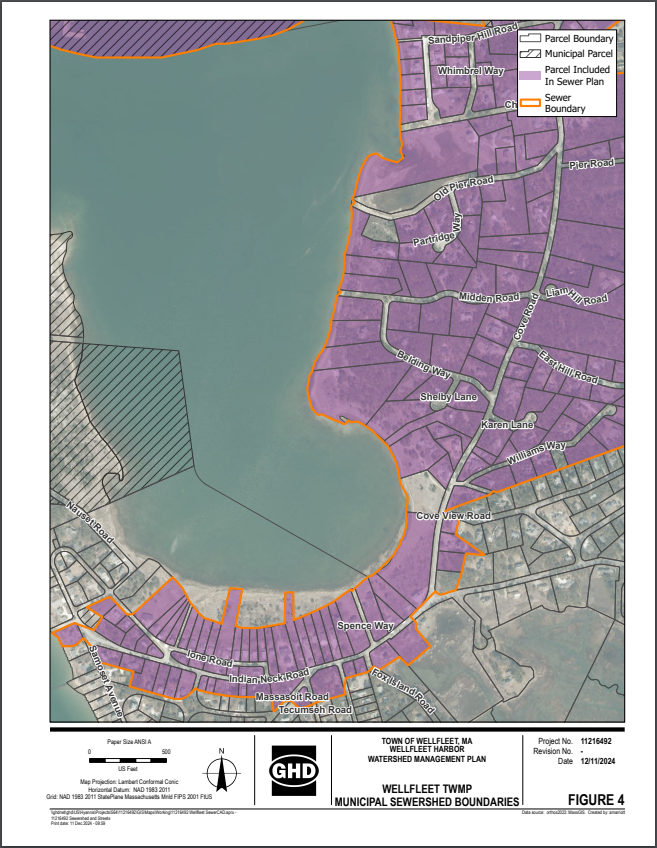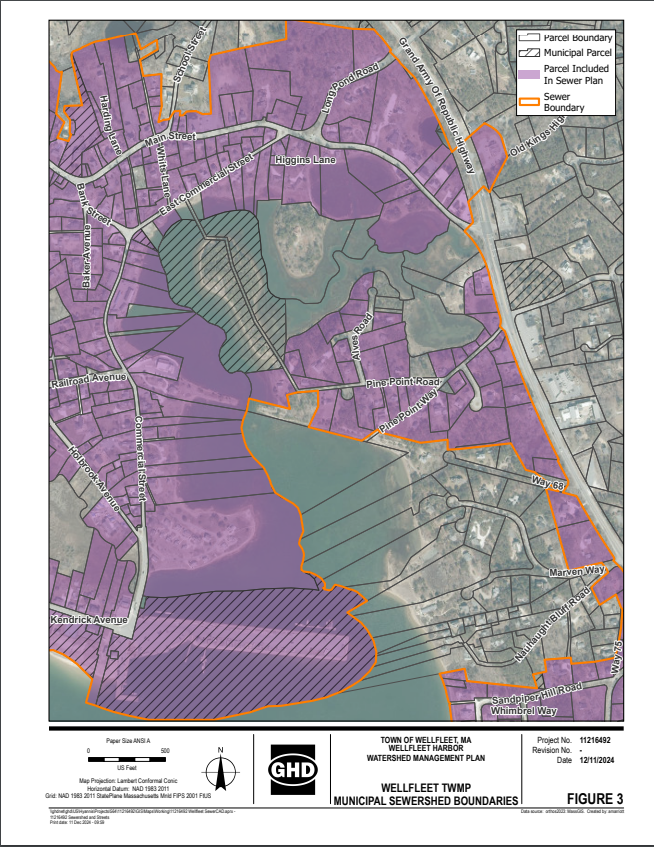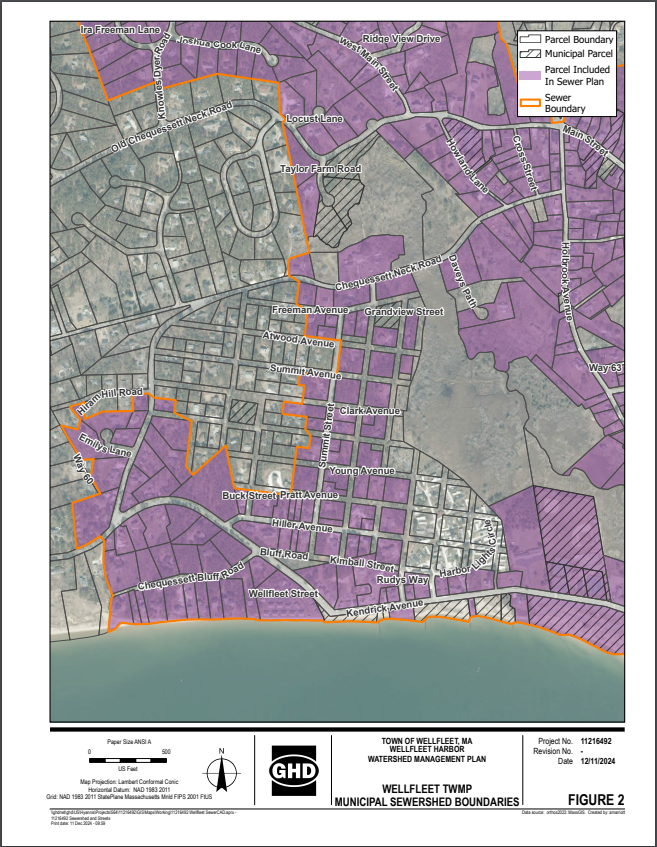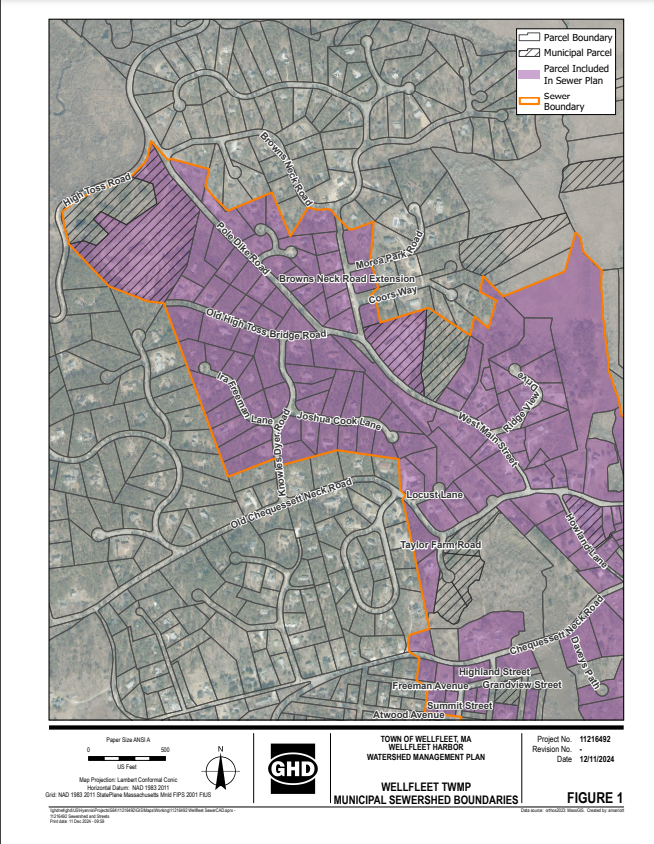WELLFLEET — A map showing the town’s proposed sewer district, updated as of Dec. 11, 2024, has been posted on the board of health page of the town website. The sewer plan is part of Wellfleet’s Targeted Watershed Management Plan (TWMP), designed to lower the amount of nitrogen entering the harbor and bring the town into compliance with state and federal clean water laws.
The map was prepared by GHD, an engineering firm with offices in Hyannis that has been contracted by the town to show where upgrades to septic systems to the best available nitrogen reducing technology — systems that are more advanced than state-standard Title 5 septic systems — will need to be made.
Under the proposed board of health regulations, which have not yet been approved, properties within the sewer district will not have to upgrade their septic systems unless they are using cesspools. Properties outside the sewer district will have to have septic upgrades under certain conditions: when a property is sold, if new construction is undertaken, if the existing system fails, or if it has a cesspool.
The proposed sewer district includes downtown Wellfleet around Main Street, Commercial Street, and Holbrook Avenue as well as the area around West Main Street and Pole Dike Roads, as had been discussed in board of health meetings. It also includes newer additions to the sewer district: the neighborhood around Summit Street, the area along Kendrick Avenue, and the area around Cove and Indian Neck roads heading toward Indian Neck.
Scott Horsley, a water resource consultant with Horsley Consulting and the primary author of the town’s TWMP, said that the sewer district had been expanded because the Mass. Dept. of Environmental Protection had reviewed an earlier version and determined changes were necessary for Wellfleet to meet its goals.
The areas that were chosen for sewering were based on both cost effectiveness and necessity, Horsley said. Areas that have high-density development, such as downtown, allow for relatively inexpensive sewering because more people will pay for hookups to a given stretch of pipe. Low-lying areas such as those near Mayo Beach also make sense because where the groundwater is close to the surface, installing advanced septic systems is more difficult.
The areas that were added to the proposed district were chosen based on these criteria as well as on conversations with various town officials, including board of health members, select board members, and the Dept. of Public Works, Horsley said.
As part of the TWMP, sewering projects are also planned for the Maurice’s Campground and 95 Lawrence Road housing developments, but they are not included on this map.
Horsley estimated the TWMP will take 20 years and will be completed in phases that GHD is still outlining. The start date for sewer construction has not been set, but he anticipates ground will be broken in two to three years.







